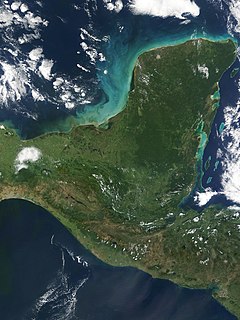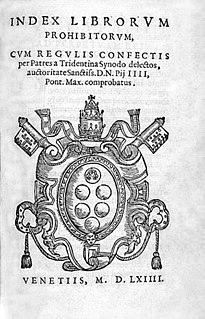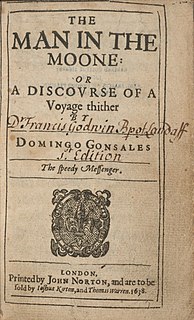
Miguel Barbachano y Tarrazo was a liberal Yucatecan politician, who was 5 times governor of Yucatán between 1841 and 1853.
The Moon has been the subject of many works of art and literature and the inspiration for countless others. It is a motif in the visual arts, the performing arts, poetry, prose and music.
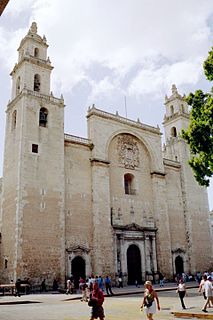
The Roman Catholic Archdiocese of Yucatán is the diocese of the Catholic Church based in Mérida, Yucatán, Mexico; the Campeche and the Tabasco are its suffragans. Its area is that of the state of the same name, covering an area of 17,204 square miles.

Tomás Antonio O'Horán y Argüello (1775–1848) was a Mexican lawyer, magistrate and senator, resident most of his life in Mérida, Yucatán in Mexico.

Juan Villoro is a Mexican writer and journalist and the son of philosopher Luis Villoro. He has been well known among intellectual circles in Mexico, Latin America and Spain for years, but his success among a wider readership has grown since receiving the Herralde Prize for his novel El testigo.
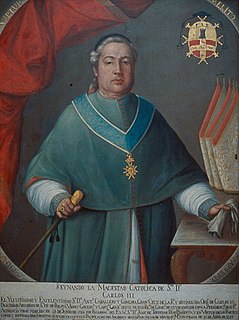
Antonio Caballero y Góngora was a Spanish Roman Catholic prelate in the colonial Viceroyalty of New Granada, and from 1782 to 1789 the viceroy of New Granada.

Hugh O'Conor by birth or Hugo Oconór in Spanish, was a military governor of northern Mexico. He was appointed governor of Texas by the Spanish viceroy of New Spain in 1767. It is recorded that O'Conor rode well over 10,000 miles (16,000 km) on horseback in the course of conducting his duties. O'Conor was called "The Red Captain" by the Apache, both for the color of his hair and his formidable military leadership.

The Republic of Yucatán was a sovereign state during two periods of the nineteenth century. The first Republic of Yucatán, founded May 29, 1823, willingly joined the Mexican federation as the Federated Republic of Yucatán on December 23, 1823, less than seven months later. The second Republic of Yucatán began in 1841, with its declaration of independence from the Mexican Federation. It remained independent for seven years, after which it rejoined the United Mexican States. The area of the former republic includes the modern Mexican states of Yucatán, Campeche and Quintana Roo. The Republic of Yucatán usually refers to the Second Republic (1841–1848).
Manuel Sánchez Mármol was a Mexican writer, journalist, lawyer, politician, and a member of the Mexican Academy of Language.
Mauro Graciano Ricalde Gamboya was a notable Mexican mathematician.
José Tiburcio López Constante was governor of Yucatán, Mexico.

Hacienda Cacao is located off the Carretera Uman-Hopelceh within Abalá Municipality, Mexico, and is in the South West Region 8 area of the State of Yucatán. It is one of the properties that arose during the nineteenth century henequen boom, and was owned by José María Ponce.

Hacienda San Antonio Tahdzibichén is located in the Mérida Municipality in the state of Yucatán in southeastern Mexico. It is one of the properties that arose during the nineteenth century henequen boom. It is part of the Cuxtal Ecological Reserve which was set aside in 1993 to protect both the man-made and natural history of the reserve area of Mérida.

Baca Municipality is one of the 106 municipalities in the Mexican state of Yucatán containing (118.78 km2) of land and located roughly 32 km east of the city of Mérida.

XHFCY-FM is a radio station in Mérida, Yucatán, with transmitter at San Pedro Nohpat. Broadcasting on 105.9 FM, XHFCY is owned by Grupo Rivas and carries a contemporary music format known as Super Stereo.

Eligio Jesús Ancona Castillo was a teacher, lawyer, novelist, historian, playwright, journalist, and Mexican politician who was born in Mérida, Yucatán. He was named “benemérito” of the state of Yucatán, a title given to distinguished people who have made significant achievements in their fields.
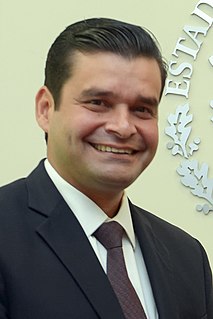
Antonio Echevarría García is a Mexican businessman and politician who is the current Governor of Nayarit.

